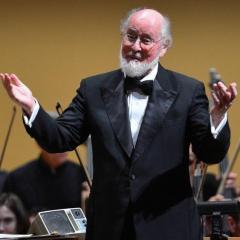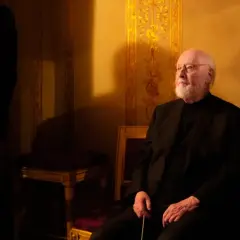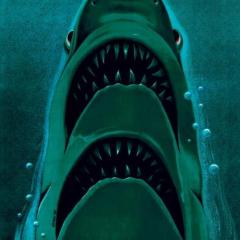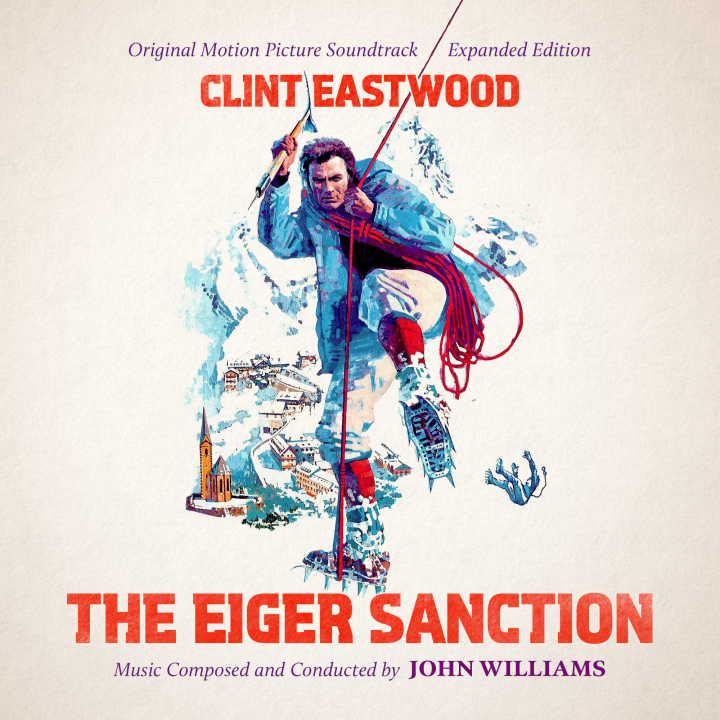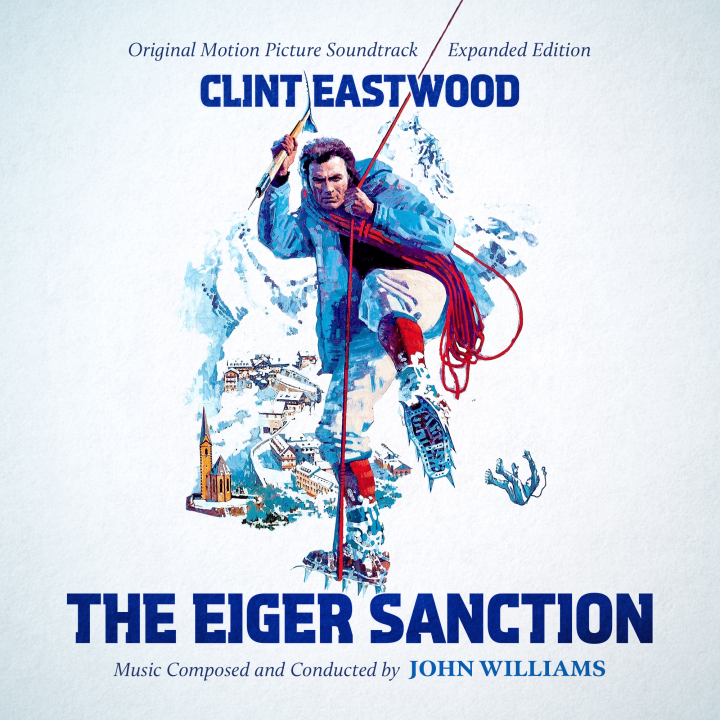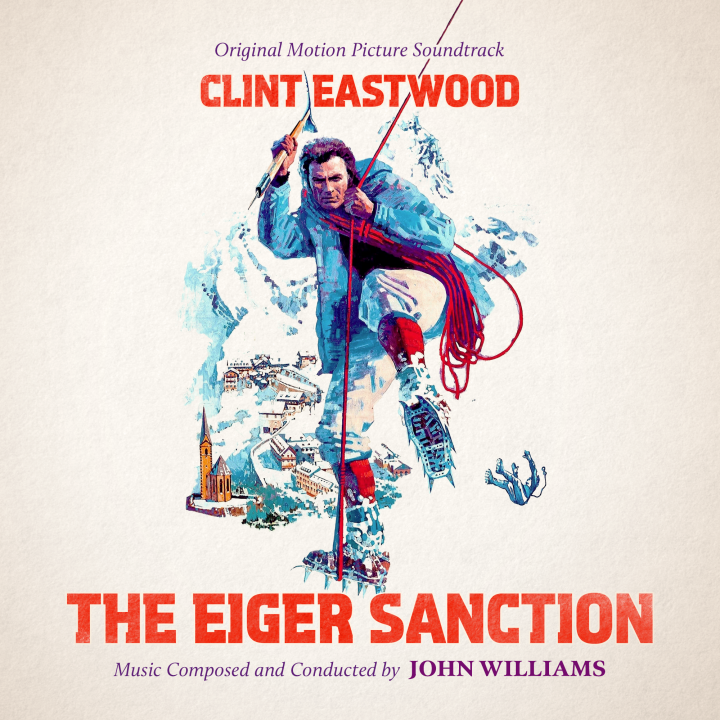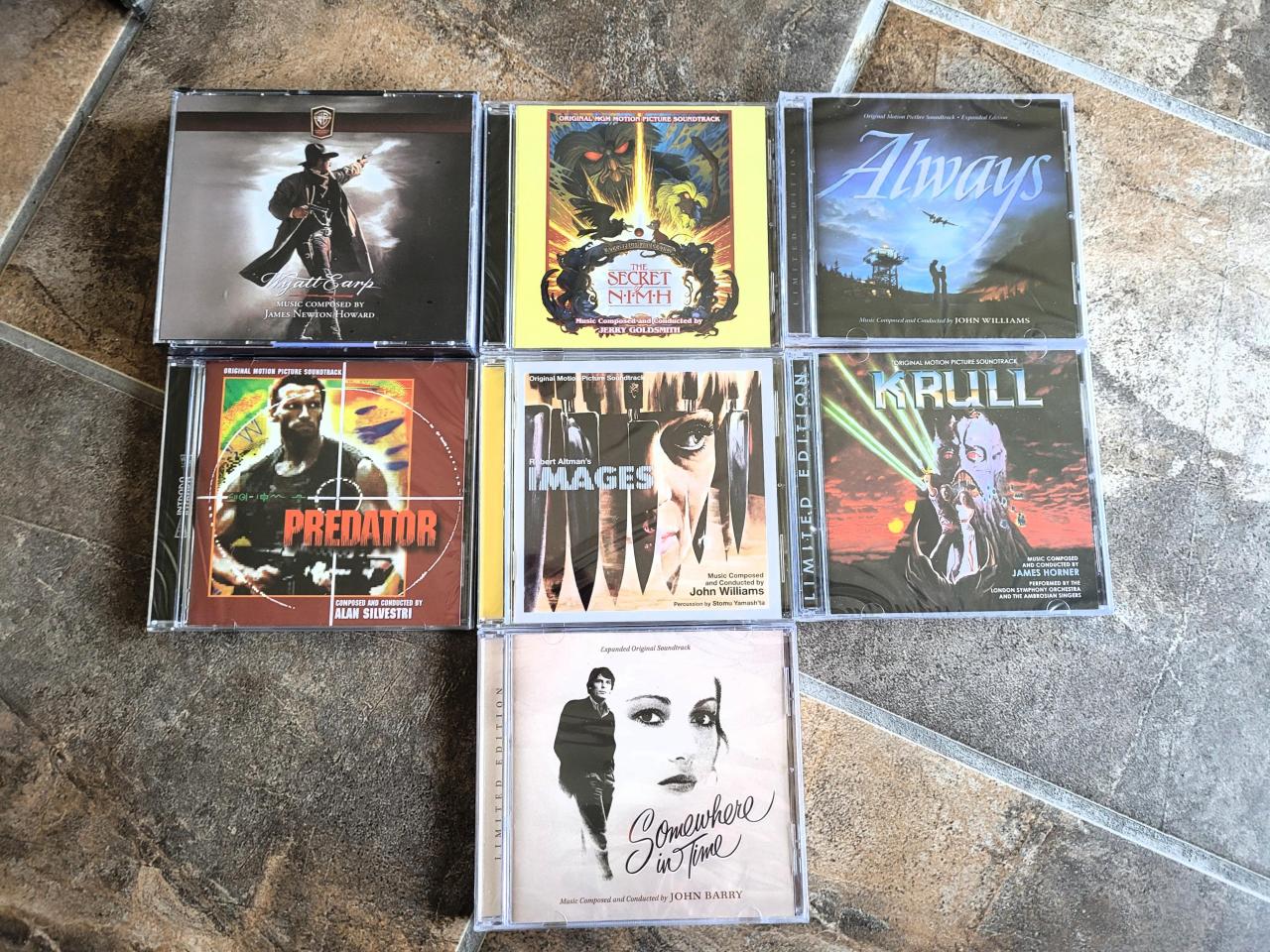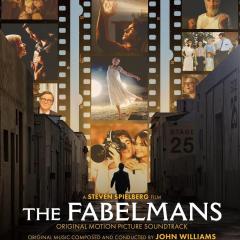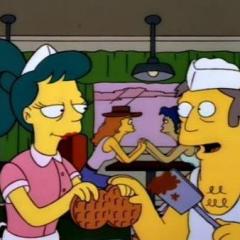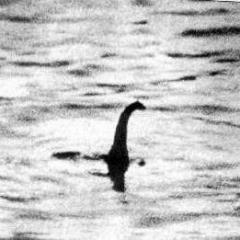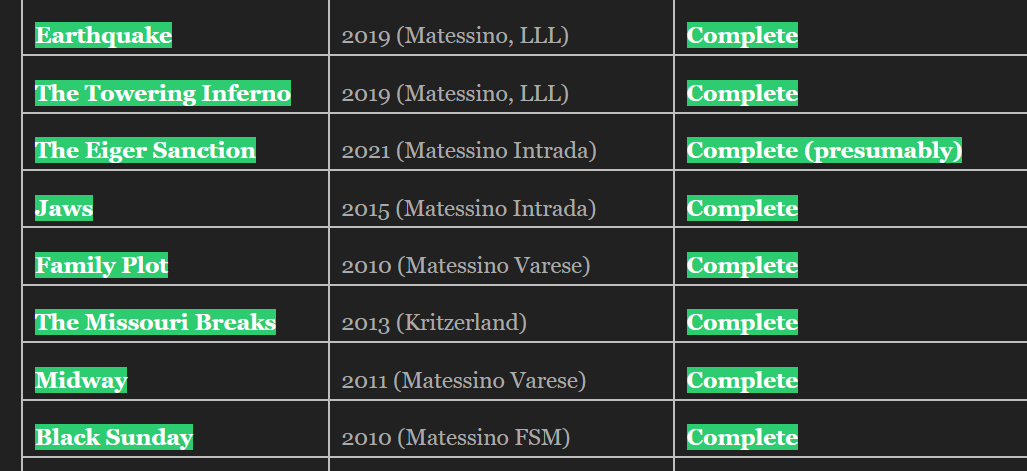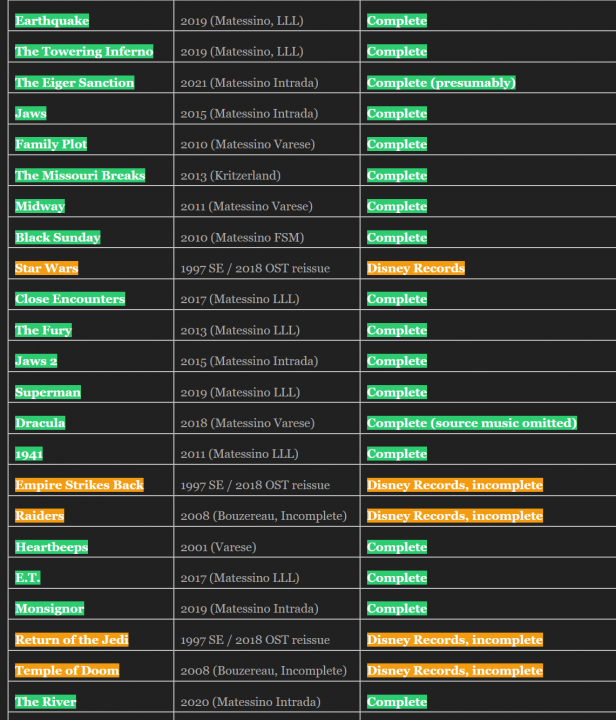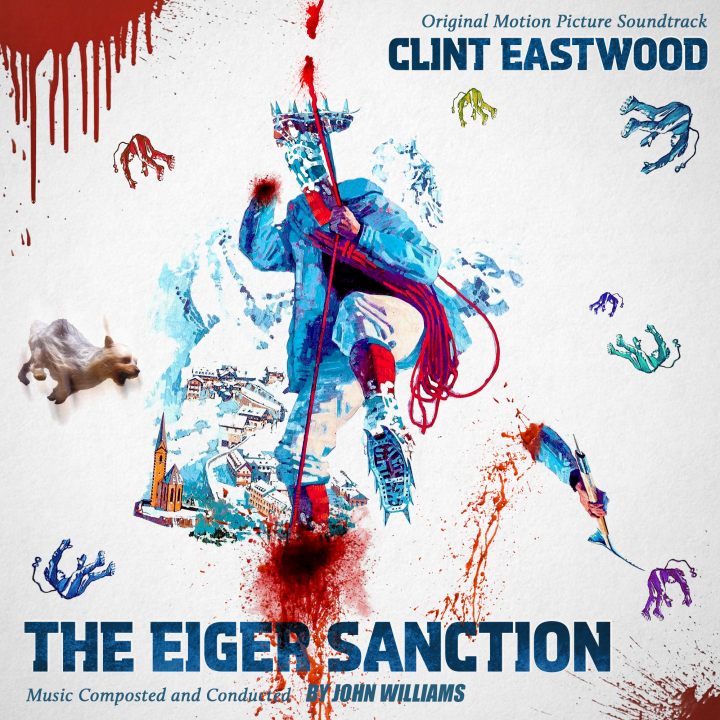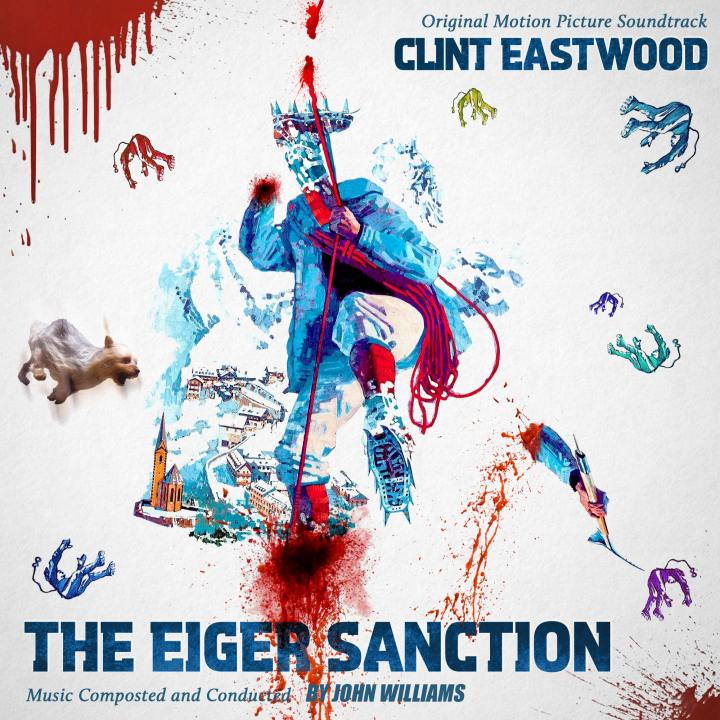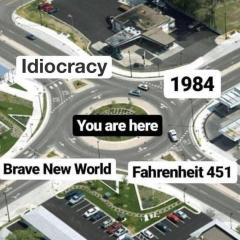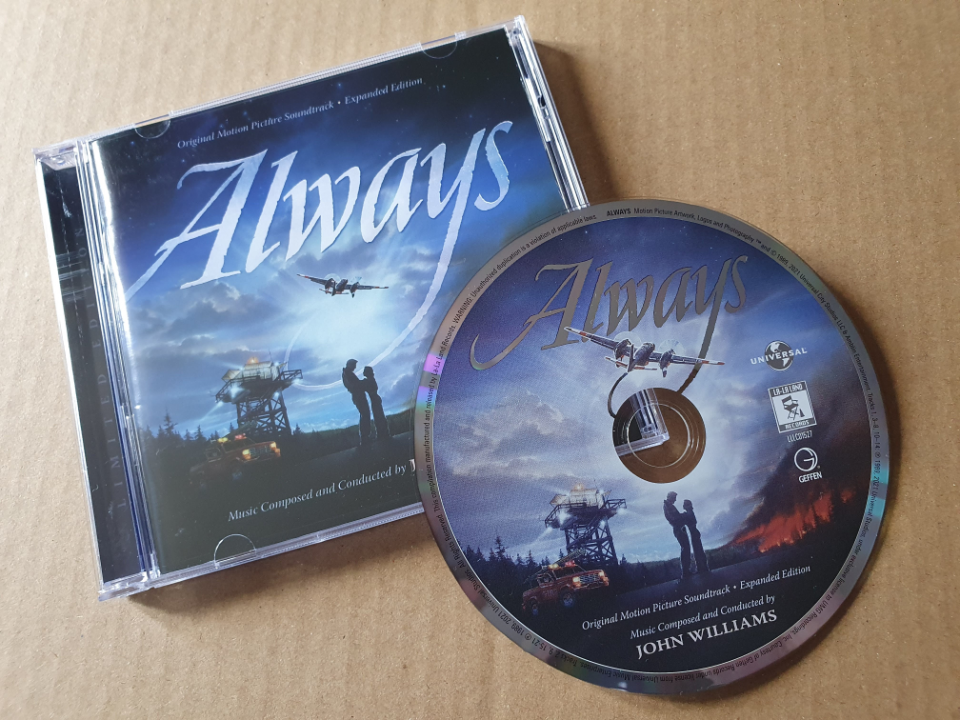Leaderboard
Popular Content
Showing content with the highest reputation on 08/08/21 in all areas
-
Hi everyone. I thought it might be useful to put together a listening guide of sorts for Williams's second violin concerto. This struck me as appropriate given how it's going to be heard in performance again fairly soon. Also, the piece, particularly its first movement, is fairly difficult to grasp on first listen! I've only put together a guide to the first movement (by far the most challenging), but if this is indeed helpful I'll consider doing the other three--or maybe someone else would like to. It's quite difficult to do this without a score, to put it mildly, so take everything here as provisional. I'm surely missing quite a lot of important details... Listening Guide for John Williams, Violin Concerto 2 MOVEMENT 1: "PROLOGUE" Overall, the most formally loose and spontaneous-seeming movement, fitting given Williams's striving for a "quasi-improvisatory" character. Not a truly non-repetitive piece, however: there are both aspects of inner-movement unity and some subtle prefiguring of material to come, particularly the concerto's principle "leitmotif" introduced in the 2nd Movement. The unpredictability of the music on a measure-to-measure level is compensated by an extremely clear division of 6 large-scale sections, summarized below. More in-depth account: SECTION 1 – INTRODUCTION 0:00 Quiet, slow introduction showcasing harp, supported by bed of strings. Shape of opening harp melody (D3-E3, D3-E3-C3-A3-D3) vaguely anticipates some later motivic details. First harp-based subphrase tonally centered on B♭-lydian, with contrasting Gm6(♭13) in middle. Second, string-based subphrase more dissonant, melodically disjunct. The third, once again harp-based subphrase coalesces on Dmaj6/min chord. 1:11 Introduction of soloist. Violin begins with repetition of note F4, giving bluesy quality to faint D-major tonality maintained by strings/harp. Melodic D tonic flanked by tritones A♭4 & G♯3 above and below. Progressively expands range upward, with what will become a quasi-motivic repeated note figure, here on B♭4 and E♭5. Thinner texture and new harmonies (F♯m and A-dim) and octatonic scale-fragment in violin at 1:50, followed by downwards chromatic cascades and melodic peak of E♭6. Unaccompanied violin sags glumly back downwards. SECTION 2 – FAST AND TURBULENT 2:24 Pulsing, agitated pattern in orchestra midrange on dissonant harmony (A3+B♭3+C4+ D♭4), supported at unpredictable intervals by rising bass-figure starting on low D. Violin gathers energy with repetition of Eb4, proceeds to a flowing, unpredictable musical thought, up to the first of several big orchestral swells marked by dissonant chord and percussive punctuation that swallows up soloist. 2:46 Violin reasserts itself over motivic rising bass-figure. Pace of textural and melodic change speeds up considerably, and music becomes increasingly key-less, violin and orchestra exchanging frenzied, short-lived ideas. Particular prominence to harp, timpani, clarinet. Low-strings trace downwards arpeggio of important Gm9 chord, echoed by violin (3:09), and Em9♭5, F♯dim7. 3:16 Lighter but more dissonant texture. Spiky, progressively accelerating violin writing against unpredictable staccato wind and pizzicato bursts. 3:33 Arpeggiating eighth-note figures in low strings resume, now upwards (D2-B♭2-D3-G2-C3-E♭3, etc.), quickly losing tonal focus as another dissonant tutti swell overtakes violin, followed by brief timpani solo (3:44). 3:46 Purely orchestral climax. Dissonant pitch pyramid assembled over B pedal. Similarly vaulting bass figures under now unified upper strings in octaves on urgent melody, arching upwards in successive swells. Pulsing/sustained brass and string melody help refocus tonality onto D, and downwards chord progression (D--C--B), while dissonant, can be referred to D-center. Ends on a shrieking tutti cluster, similar to opening sonority of section but greatly intensified. SECTION 3 – SLOW AND TRANSPARENT 4:23 Dreamy extended-tertian sonorities, starting with and centered on Gm13 (chord anticipated at 3:11, arpeggiated texture anticipated at 3:33). Violin enters with comparatively lyrical theme with pronounced downwards-moving trajectory. Tonality shifts to Dm, moving stepwise to Fm. Melodic shape heard in passing at 5:00 (F5-E5-G♯5-C5) seems to anticipate the recurring “leitmotif” of movements 2 & 4 -- you know, the one that sounds a bit like "Moonlight" from Sabrina. 5:10 Clear sense of tonality dissolves, violin becomes more agitated, emphasis on dotted rhythms, brief mini-solo of dissonant stops (5:18-5:22). Followed by dense, highly dissonant wind-ensemble writing, drawn from immediately preceding violin solo and segueing back into it. 5:39 Deep, dark minor chords (C♯m--Caug) prepare a catchy but ominous melody for solo violin built on double-stops (parallel minor 6ths), again with contour (A♭4-A♭4-G4-B4-C4) that anticipates shape of recurring leitmotif from mvts 2 & 4. 5:50 Busily spinning passagework for violin and glittering accompaniment, foreshadowing movement 2, recedes to background to allow brief flute solo (B♭4-A4-E5-G5-F♯5-F♯4) in E-minor, suggestive but as far as I can tell not motivically derived from anything else. Violin follows-through with flute melody, seamlessly moving to a… 6:20 Pre-cadenza for violin and harp, again with elements of flute melody (G6-F♯6-A5…B♭5-D♭6-C6-C5) SECTION 4 – CADENZA 6:50 Succession of contrasting technical and expressive ideas, not a huge degree of thematic connectivity with preceding sections though fairly consistent within its own scope. (Substructure: Downwards Em/B♭ chords—leaping octave pairs—compound melody (E6-D♯6-B5-A♯5, D♭6-C6-A5-G♯5)—trills—resigned droop—gathering energy—ascending melody over pedal—arpeggios—trills—melody reminiscent of VC1—ascending passagework maxing out at A6—descending, harsh stops, ending with repeated D4.) SECTION 5 – BROAD AND CLIMACTIC 8:38 Rather spooky melody for violin (F♯4-D5-B♭6-F♯5) over brief suggestion of B-minor. Quickly yields to new material for orchestra, with massed brass, strings in octaves, and thick, repeating wind quasi-fanfares, all grounded over low C-pedal (C-A♭-D♭-G chord?). Classic JW concert music stuff (c.f. For Seiji, Soundings, Heartwood, etc.). Much of this seems to respond vaguely to material introduced in the Cadenza. 9:00 Almost aleatoric sounding passage for harp, solo high winds, pizz strings. 9:09 Emphasis on low winds and strings. Recollection of ascending bass figure from 3:33 (now E2-B2-D3, F♯2-B2-E3) 9:14 Climax building really starts in earnest. Wind chords seem to outline violin’s spooky melody from start of section, against aggressive massed-string section counterpoint, ending on bright, dissonant wind chord. 9:25 Violin solo reasserts self, now more actively interacting with rest of orchestra. Strong sense of rhythmic and harmonic acceleration, climax building pauses after timpani interjection (9:40). 9:48 Final, rapidly attained climax, fastest solo violin writing; impression of huge sweeping motions from whole orchestra, culminating on a huge tutti chord of characteristically JW-dissonant flavor (A-C-E- F-A♭-C♭) SECTION 6 – AFTERMATH AND CODA 10:11 Instantly quiet, clear duet for harp and violin. Clear reminiscence of beginning of Section 3, via repeated harp arpeggio of extended triadic sonority, this time F♯m11(b♭13) instead of Gm11(nat13). Meditative violin solo above, not clearly connected to previous themes. 10:40 Quiet upwards scurrying from violin, reaching high B6, followed by abrupt, staccato motif (second phrase accompanied by four dissonant pizzicato chords from rest of string section). 11:03 Violin settles on sustained low A♭3, against resonant F2-A1 bass support on harp. Full fade-out by 11:16.15 points
-
My last order was from MBR to Australia and I was impressed by the shipping. Reached Australia from France about 8 days after ordering, which is faster than any order I've had with Intrada or LLL. I think the last LLL order I placed took about 4 weeks to arrive (and MBR's shipping costs are about the same, if not less when you bundle together enough albums to make it worthwhile). I'll probably continue ordering from them in the future. I can't justify buying one or two CDs from each label to ensure they get the biggest slice of the profits anymore, the shipping costs are just daylight robbery for international buyers now (and for the cost we're forking out, it's not exactly fast delivery). So that's my two cents. Two thumbs up for MBR.4 points
-
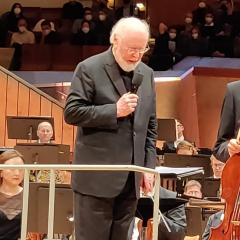
Has anyone suffered the new european import fees?
Chewy and 3 others reacted to MaxTheHouseelf for a topic
Bought Images and A.I. from Music Box Records (France) recently (I'm from Germany), went super smoothly (shipped with DHL Express), didn't have to pay shipping costs (13€) twice and no bothering with customs. It even saved me a few bucks and I will definitely buy from them again and not order directly from US or UK labels because of the import fees.4 points -

The "(Fill in the Blank) Has Died" Thread
bruce marshall and 3 others reacted to Manakin Skywalker for a topic
Trevor Moore, who portrayed John Williams in the infamous WKUK sketch has died. Trevor Moore, of 'The Whitest Kids U Know', dead at age 41 (nypost.com)4 points -
I listened to the score program 4 times in a row. It's like being in heaven. I needed this in my life. Many thanks!3 points
-
Here is @Omen II's list of original score heard in the film from this thread (a decade old now!), and where you can find that music on the new Intrada main program 1 Main Title [1] (3:02) 1. Main Title • 3:23 2 The Microfilm Killing [11] (1:21) 2. The Microfilm Killing (Film Version) • 1:47 3 Dragon’s Lair (0:54) 3. To The Dragon • 1:30 4 Up The Drainpipe [12] (2:55) 5. Up The Drainpipe (Film Version) • 3:38 5 Theme from “The Eiger Sanction” [2] (1:08) 6. Love Scene • 4:05 6 Theme from “The Eiger Sanction” (Hemlock and Jemima) [9] (0:40) 9. The Unlocked Safe • 2:17 7 Empty Safe (0:30) 9. The Unlocked Safe • 2:17 8 Friends and Enemies [5] (1:24) 10. Friends And Enemies (Film Version) • 3:23 9 Friends and Enemies [5] (1:35) 10. Friends And Enemies (Film Version) • 3:23 10 George Sets The Pace # 1 [10] (1:35) 11. Montage – Running With George • 4:48 11 George Sets The Pace # 2 [10] (0:44) 11. Montage – Running With George • 4:48 12 Training With George [8] (1:23) 11. Montage – Running With George • 4:48 13 The Top Of The World [6] (2:37) 12. The Top Of The World (Film Version) • 3:37 14 The Top Of The World [6] (0:31) 12. The Top Of The World (Film Version) • 3:37 15 Night Visitor (1:02) 13. George Reveals Herself • 1:17 16 The Eiger [13] (1:18) 16. The Eiger (Film Version) • 1:53 17 The Climb Begins (1:39) 19. Leading The Climb • 2:46 18 The Climb Continues / The Sunset [4] (1:24) 20. The First Sunset • 1:37 19 The Waterfall (0:30) 21. Sunrise • 0:44 20 Rocks! (3:06) 22. Falling And Swinging • 4:42 21 The Foehn (0:55) 22. Falling And Swinging • 4:42 22 The Icy Ascent [4] (3:53) 23. The Icy Ascent (Film Version) • 4:13 23 The White Spider (1:27) 24. Down The Ice Face • 2:15 24 Hemlock Rescues Meyer (2:17) 25. Freytag Onto Ice • 2:24 25 Death Plunge (0:27) 26. Hanging By A Thread • 3:47 26 Cutting the Rope (0:36) 26. Hanging By A Thread • 3:47 27 End Title: Theme from “The Eiger Sanction” [7] (2:00) 27. End Title • 2:16 Any Intrada track not listed above is therefore entirely comprised of music not used in the film, either because Eastwood decided to have the scene play with no music instead (tracks 14 and 15), or cut the entire scene from the final film (tracks 4, 7, 8, 17, 18)3 points
-
It wasn't just "the UMG fire." It was an archive located on the backlot of Universal Studios which housed a combination of elements from Universal Pictures and Music Group. Universal Pictures themselves declared the fire destroyed, "40,000 to 50,000 archived digital video and film copies." Though the recent NYT exposé asserted the fire "also destroyed 118,000 to 175,000 audio master tapes belonging to Universal Music Group." Naturally UMG denied this, but the true extent of the materials lost in that fire has never been fully disclosed (and likely never will, due to legal ramifications). So I'm not sure how you can so confidently proclaim the fire had no bearing on anything JW-related except the album masters for Jaws, Eiger and ET. Just because UMG don't own those film score recordings doesn't guarantee the masters weren't located at that facility. As we've learned countless times from Mike in the past, things are often not located where they should be.3 points
-

The John Williams Concert Work Listening and Discussion Thread
Miguel Andrade and 2 others reacted to SteveMc for a topic
To Lenny! To Lenny! (1988) or For New York (Variations on Themes By Leonard Bernstein) Short piece written to celebrate the great Leonard Bernstein's 70th birthday and premiered by Williams and the Boston Symphony at Tanglewood, this composition, which goes by two names, is a brief exploration of some Bernstein tunes in a very John Williams way regarding direction and orchestration. It is an enjoyable little musical aperitif. Here it is recorded by Williams himself.3 points -
JW's 1974-1976 is kinda interesting 1974 March 3 - Barbara's death March 15 - Conrack opens (no OST album released) March 30 - Sugarland Express opens (no OST album released) July 30 through August 1 - Earthquake score recorded {61 piece orchestra, Universal City Studios Scoring Stage} (first score written post-Barbara's death) August 19 & 20 - Earthquake album recorded {51 piece orchestra, RCA studio on Sunset Blvd} October 22 through November 11 - Towering Inferno score recorded {20th Century Fox Studios Scoring Stage} November 15 - Earthquake opens (re-recorded OST album released) December 14 - Towering Inferno opens (OST album released) 1975 January 29 through February 3 - The Eiger Sanction score recorded {Universal City Studios Scoring Stage} March 3,4,10 - Jaws score recorded {71 piece orchestra, 20th Century Fox Studios Scoring Stage} March 5 - Jaws source music recorded {Universal City Studios Scoring Stage} March 26 & 28 - Jaws test screenings that positively mention the score convince Universal execs to greenlight re-recorded score albums for both Jaws and Eiger Sanction April 17 & 18 - Jaws album recorded {Burbank Studios} May 12 & 13 - The Eiger Sanction album recorded {Burbank Studios} May 21 - The Eiger Sanction opens (re-recorded OST album released) June 20 - Jaws opens (re-recorded OST album released) December 2 & 3 - Midway score recorded {Universal City Studios Scoring Stage} 1976 January 12 through 14 - Family Plot score recorded {Universal City Studios Scoring Stage} February 28 - Jaws' album wins the Grammy early '76 - The Missouri Breaks score recorded {Kritzerland liner notes don't indicate exactly when or where} early '76 - The Missouri Breaks album recorded {Kritzerland liner notes don't indicate exactly when or where} March 29 - Jaws's score wins the Oscar April 9 - Family Plot opens (no OST album released) May 18 - Missouri Breaks opens (re-recorded OST album released) June 18 - Midway opens (no OST album released)2 points
-

Danny Elfman's SLEEPY HOLLOW (1999) - 2021 4-CD Expanded Edition from Intrada Records
Amer and one other reacted to Richard Penna for a topic
I listened to almost all of the main program up to The Church Battle in the car yesterday, and, just, wow. The improvement over the OST in terms of clarity, and general flow of the score, is just amazing. The extra music is a welcome bit of fresh air on top of the original album. If I loved this score before, I absolutely adore it now! It also highlights that for me, the Elfman box didn't do a very inspired job of choosing its additional 10 minutes of music. In my view, the first four tracks represented some of the less essential missing music, and (as I'll come onto later), presented two 'film version' tracks that aren't. Something else to observe, cementing my decision to retain the first disc separately, is that even where the film uses the same version of a cue as the album, there are still lots of mixing differences, with different instruments at the forefront in places. I've gone overnight from keeping the OST just as a nostalgic piece, to being a 'tidier' listening version of the score, with some 'easier on the ears' mixing in places, and the odd microedit. I've listened to all the alternates in some detail, and have a high level idea of what's different. Most of them are essentially the same cue but with orchestration differences, or instruments moved around, and sometimes a few different bars. Another common change is vocals/soloists/brass, etc, dropped for later versions. This is the volume of material we usually don't get outside of sessions, so doubtless there is more to discover between versions - this is just an initial overview of what I reckon is going on in each track to explain its inclusion. (I didn't expect to write this... it just came out ) 04. Introduction (Original) (3:50) - Follows the same ideas as the revised version, but a different composition in a few places early on in the cue. 05. A Place Called… (Version #1) (1:33) - Pretty sure just the very ending is a slightly more dramatic build-up. 06. Main Titles (Original) (2:45) - seems based on the same idea as the film version, but a different insert when Ichabod is looking in his book and a very different take (more along the lines of the final part of Love Lost) on the shot through the trees. This also ends on what sounds like a shortened version of the arrival in the village. I'd theorize that from Ichabod exiting the carriage, the film uses the orchestra from CD 2, track 2, but the vocal from this track, for its final mix - hence why the former doesn't quite match the film - I reckon that was post-fiddling by Burton. 07. Main Titles (Alternate) (2:22) - pretty much the same as the previous track until the 'trees' bit, where it has the film's insert. It stops as he gets off the carriage. 08. The Story… (Original) (4:27) - mostly some instrumentation differences, and a few trumpet lines that aren't in the film version. 09. Ichabod’s Arrival (Alternate) (1:27) - A more string-based intro, loses a tiny repeated note that the film version has, and the crescendo over the shot of the mansion is more subdued. This cue is what the Elfman box thought was the 'film version', and hence what made me nervous that this set would make the same selection. Thankfully the sessions were incomplete, and the Elfman box was just wrong. 10. Masbath’s Terrible Death (Original) (1:44) - just a different ending, a bit messy in its orchestration - I didn't like it. 11. Autopsy/Phony Chase (Original) (2:33) - same deal as previous track - more listenable, but not overly different IMO. 12. Sweet Dreams (Original) (1:18) - I think this moves the choir more to the rear, and brings some instruments forward. Feels much lighter than the film version. I'm a bit surprised this would make the cut as an 'alternate' as it sounds to me just what you get if you fiddle with the layers in post. 13. Sweet Dreams (Alternate) (1:17) - takes a more 'plucked string' approach for the most part. 14. Young Ichabod (Revised #1) (1:20) - I think this is just the album track with the choir layer and other bits brought way more to the front. 15. Spying (Original) (3:26) - a subtly different take on the Ichabod/Katrina material, rather nice. 16. Philipse’s Death (Original) (1:17) - mostly just some instrumentation differences from the horseman's fanfare onwards (the brass is less prominent) 17. Mystery Figure (Original) (1:10) - different statement when Katrina is revealed 01. The Tree Of Death (Original) (10:23) - Having compared in my editor, it all looks basically the same except for the final section right at the end. 02. Bad Dream/Tender Moment (Original) (3:31) - these two are just slightly different variants on the tender material at the end. 03. Bad Dream/Tender Moment (Version #2) (3:31) 04. The Will (Original) (2:28) - takes a more string and woodwind based approach. It very much lacks the effective brass-based build-up in the film version. Probably the most different of all the alternates. 05. Evil Eye (Original) (3:45) - mostly instrumentation differences, with the bit in the woods being heavier and more dense than the film, more instruments after that, then a completely different composition at the end. 06. The Church Battle (Original) (8:46) - A different early section (first minute), then mostly the same until Love Lost, which has some very different parts, with a more brass-based approach. A really cool moment at 4:00 with brass and solo vocal adding to the strings. 07. Love Lost (Revised) (5:16) - loses the added brass/vocals of the previous version, but has some other instrumentation/melodic differences early on. 08. The Windmill (Original) (7:08) - differs from the film in a few places. (the OST edits the film version down and changes the mixing here and there) 09. The Chase/The Final Confrontation (Version #1) A New Day! (Original) (9:05) - some fairly big differences towards the end of Confrontation, and A New Day is a more subdued, with no brass and a different melody. 10. The Chase/The Final Confrontation (Version #2) A New Day! (Original) (9:04) - no composition changes I can hear, but uses a string passage instead of woodwind, just before the horseman's kiss. 11. End Credits (Original) (3:10) - I believe this just has an extra solo vocal at the end. The film drops it, leaving only the counterpoint.2 points -

New Project: John Williams Potter Scoring
Cerebral Cortex and one other reacted to Potter Scoring Project for a topic
We have a short cue for today, but our first main Malfoy-centric scene. Here's Cue No. 14: Malfoy and the Room of Requirement!2 points -
Helpful: yes Remaining three movements: yes, please.2 points
-
Batman Returns. Nothing wrong with the others but I just have a huge emotional connection to this music and film. It has the wonder but also the darkness and macabre. It is one of the scores that made me pay attention to music in films in the first place. The expansion also is just plain perfection. Karol2 points
-
Nice poll. I voted for BR. It's one of my favorite Elfman scores, as well as one of my favorite written for comic book movies.2 points
-
It's like an early preview of what Spielberg and Lucas would do to his music later in his career :p2 points
-
Lucky Eiger wasn't in the same facility that burned down in 2008! Or if it was, lucky that it escaped unscathed. All the more reason studios shouldn't sit on these deteriorating assets without taking steps to preserve them (electronically, in multiple locations). That fire was probably the kick up the ass Universal needed. Indeed, they deserve kudos for turning things around in the ensuing years. They've (seemingly) become the easiest studio for labels to work with, and appear to be the most supportive of their efforts. Smartly, the labels are taking full advantage of the current management cultivating these remasters; as we've seen over the years, things can change quickly at a managerial level... Are we aware of any other first-generation JW elements that were lost in that fire? From memory the album sessions for E.T. were likely destroyed in 2008, but Mike found a second-generation copy to use for the LLL. It seems neither JP nor TLW were affected, although the tapes for the latter were already shedding back in 2015. I think Mike also said Sugarland and some other early Universal scores were found and transferred for safekeeping. I believe Schindler's List was also located but ultimately unused for that expansion (at JW's request to retain the album master).2 points
-
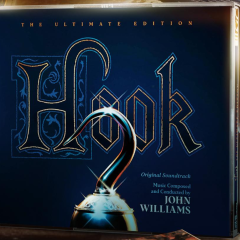
THE EIGER SANCTION (1975) - 2021 2-CD Expanded Edition from Intrada Records
Yavar Moradi and one other reacted to Jay for a topic
I can't understand how different scores have their elements preserved so differently, even when so many things are the same. Jaws and Eiger Sanction are both 1975 Universal Pictures films, whose scores where considered good enough to justify special recording sessions to re-record highlights to make albums out of to sell. The 1st gen master of Jaws' film tracks were already deteriorating when they pulled just 25 years later to make the new 5.1 mix of the film in 2000, and the album 1st gen masters burned up in the 2008 UMG fire before anyone got to ever revisit them for a remaster. Meanwhile Eiger Sanction's film tracks and album tracks are both found perfectly preserved 45 years down the road and we get this great new comprehensive and great sounding remaster of both. Go figure.2 points -
That. The Varese CD faded the track out early for some reason. Now we get to hear the full ending.2 points
-
.
Smeltington and one other reacted to Bounty95 for a topic
STII:TWoK Krull An American Tail The Land Before Time Willow Glory The Rocketeer Legends of the Fall Braveheart Apollo 13 Titanic The Mask of Zorro The Perfect Storm A Beautiful Mind The Legend of Zorro Avatar Case closed. I like The Lion King, Gladiator and PotC 3 though.2 points -
Oh, definitely his best theme. I have many favorites but that is number one. Penguin ranks high too.1 point
-
The Catwoman theme is still my favorite from Elfman.1 point
-
I don't think anything's been shared publicly about the film recording's elements, thought Mike did mention in his RTE intro that they found a multi-track element for the album re-recording There will probably be more information shared when Maurizio's next podcast episode goes live - which is any day now, I suppose?1 point
-
Yea it seems like Williams scored a much longer cut and then Eastwood went nuts in the editing room, removing entire scenes, entire characters, and shortening other scenes. Also, I cannot vouch for @Omen II's timings or anything; Maybe it was hard to hear the very start or end of cues in the film's mono mix, or maybe he used a PAL spedup copy, I have no clue. I haven't studied the actual film myself, but I am planning on doing so later to get a handle on all the source music heard in it1 point
-
1 point
-

Soundtracks, Compilations, or other recently purchased Music
Indianagirl reacted to Bespin for a topic
1 point -

The John Williams Concert Work Listening and Discussion Thread
Tom reacted to Miguel Andrade for a topic
Not to my knowledge. I know that the Takemitsu bit led Bernstein to conduct some of the Japanese composer's music.1 point -
Has anyone suffered the new european import fees?
Incanus reacted to Marian Schedenig for a topic
Naturally. The whole point seems to be that too many sellers have been avoiding the correct fees by putting incorrect values on the declaration, so they removed the minimum amount, obviously with the intent to remove (almost) any chance of the customs operators simply waving packets through. Presumably they've often been doing that simply out of laziness (because they either didn't bother to check if the declared value is plausible, and often not even to check the value at all - I used to get many packages tax free that should have been taxed based on what the label said), so now they don't have that option anymore and simply have to tax everything. So small chance of anything slipping through. Music Box will probably become my go to store for most Label releases.1 point -
Credits for The Missouri Breaks:1 point
-

The John Williams Concert Work Listening and Discussion Thread
SteveMc reacted to Miguel Andrade for a topic
The premiere was given with Ozawa conducting what was called "A Bernstein Birthday Bouquet", featuring short celebratory pieces by Luciano Berio, John Corigliano, Leon Kirchner, Lukas Foss, Jacob Drukman, Toru Takemitsu and William Schuman, along with the Williams. This little suite was preceded by a short statement of the Times Square theme from On the Town, a motif that is present through most of the pieces, including the Williams. Besides the On the Town quote, Williams also quotes briefly, and appropriately, the Happy Birthday tune.1 point -
I live in Australia, all international purchases are prohibitive. Shipping costs the same as the price of a CD and more meaning a single CD from Varese Sarabande could cost me well over $70 for a $17 title. For this reason, it's always difficult to justify buying one cd from LLL or Intrada or Varese. It's gross and unfair why I have to pay double or triple what my US or UK comrades do, and now that fate is worsened for Europeans and non-EU customers. When something is a limited edition, you take the risk of purchasing it with a chunk of your paycheck or holding out for a time when it's more convenient to buy at which time it's gone out of stock.1 point
-
Interesting: Tonight, as we near the end of the Games, I heard the original intro to JW's Olympic Fanfare & Theme (i.e., not Bugler's Dream) on the NBC broadcast. I had never -- not in this Olympics or any other in my lifetime -- heard NBC use that JW intro. They always used the 1990s version with the Arnaud Bugler's Dream intro. I think most of you will know what I'm referring to, but just in case, the first few seconds of the following video is the original intro I'm referring to, which was used tonight on NBC:1 point
-
I love when composers use the Variation approach. It is one of the few instances where it feels top-tier composers collaborate with one another. This little piece feels like an exact amalgamation of both composers at their most joyous. Do we have any quotes from Bernstein on the piece?1 point
-
1 point
-
He definitely quoted a good amount of it around the arrival at Kamino. Didn’t notice any other stuff, but might have just been wrapped up in the story.1 point
-
Well, just don't harsh my buzz. I'm manifesting. I know The Secret1 point
-
So far... Hook's coming1 point
-
Intrada Records was kind enough to let JWFan premiere the tracklist, a sample track, and a preview of Jon Burlingame's liner notes and Kay Marshall's artwork. Check it out! https://www.jwfan.com/?p=134271 point
-
Zimmer has his very solid moments, but he is essentially a pop film composer and this colors his sensibilities in composition and production in a way that rubs wrong with my sensibilities. Horner was a postmodernist classical composer who rebelled against the establishment by embracing the form of pop film composing. Stuff like Krull, The Land Before Time, Braveheart, and The Spitfire Grill are works of artistic vision and integrity at a level that Zimmer will probably never match. Honestly, Zimmer is probably a more effective film scorer than Horner was, but Horner was the better composer.1 point
-
Recording, for those who missed it: Chewy · RTE Eiger Sanction1 point
-
1 point
-
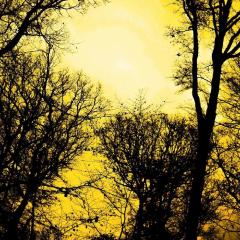
Jerry Goldsmith - THE RUSSIA HOUSE (Expanded by Quartet Records)
WMarkus reacted to Brundlefly for a topic
Hopefully, they will be able to do the same thing with Papillon.1 point -
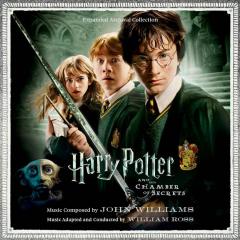
Roger Feigelson announces a Williams title is coming from Intrada in 2021
aescalle reacted to Demondm810 for a topic
It's Eiger Sanction!! http://www.intrada.net/phpBB2/viewtopic.php?f=4&t=87671 point -
I didn't hate season 3 or think it was horrible, but it was of course absolutely overall not as good as the first 2 seasons. I think there are numerous reasons for this. One is that the show was more unique and interesting when it was in the park(s), as opposed to a kinda generic "future" city. The western atmosphere season 1 and 2 episodes had was great, especially when juxtaposed with a sci-fi story. And there was so much amazing cinematography showing off those real outdoor western locations, it was gorgeous to look at. Season 3 lost all this. Also the story told wasn't as interesting. During seasons 1 and 2 you had all these interesting ideas about AI, when does AI become a lifeform, etc - not to mention the mystery of the sabotage, the drama of who would escape and who wouldn't, the shock that eventually both founders sided with the AI, etc... season 3 was cool in theory that it tried to go into more new concepts like collecting data on people allowing for perfect predictions of the future and stuff, but it wasn't enough or as compelling. And then there's the way the story was told, which also wasn't as good. A lot of the storytelling was confusing; You never really had a good grasp on what the different causes were striving for and who was fighting for which cause. And the action scenes just weren't that good. A lot of flat, boring camera work and just not very exciting action material. And finally there's the actors. Anthony Hopkins and Ed Harris were absolutely incredible in this show, and any scene either (or especially both together) had in the first 2 seasons kicked things up a notch every time. Season 2 already suffered from no longer having Hopkins in every episode, but still got by with a compelling story and everything else. But season 3 had no Hopkins at all (and no Teddy or Elsie or Akecheta!), and much less Harris, and even Dolores / Maeve / Bernard / etc got sidelined a lot for new Season 3 characters, none of which were as compelling as our original crew. I am hopeful they can right this ship with a 4th season, and absolutely hope that the entire show will finish with either season 4 or season 5.1 point

